Many people wonder what is the bidet? It’s actually a bathroom fixture designed for personal hygiene after using the toilet. Looking to buy bidet now? Here’s the fast path: the market is booming, features have matured, and prices are competitive. In minutes, choose the right bidet toilet seat or attachment, avoid install mistakes, and see your ROI from less toilet paper and higher hygiene—backed by the latest 2025 data.
Key Above-the-Fold Takeaways
-
What to buy first: an electronic bidet seat with warm water, heated seat, warm air dryer, and a self-cleaning wand works for most households.
-
Payback window: many families see payback in 8–18 months from toilet paper savings and less plumbing stress.
-
Market proof: North America is growing at 12.11% CAGR to $552.54M by 2029; global value is heading toward $3.2B by 2033. That means more features for less money in 2025.
How to Buy Bidet: 60‑Second Selector
Want a quick match before you go deep? Answer six questions. Your answers steer you to the best bidet to buy for your home, budget, and space.
-
Toilet shape: Is your bowl elongated or round?
-
Elongated bowls are longer; round bowls are shorter. Most modern toilets are elongated.
-
Is there a GFCI outlet for bidet use within 4–5 feet of the toilet?
-
Yes → You can choose electronic seats.
-
No → Consider a manual attachment now, or plan to add a GFCI outlet.
-
Budget today:
-
Under $100
-
$200–$400
-
$500–$1,200
Selector output
-
If you have an elongated bowl, a nearby outlet, and a $200–$400 budget: Choose a warm-water electronic bidet toilet seat with heated seat, adjustable spray, and dryer. This is the best value path for most families in 2025.
-
If you have no outlet and rent: Start with a manual bidet attachment under $100. It is easy to install and remove. Later, add an outlet and upgrade to a seat.
-
If comfort and hygiene are key and budget is $500–$1,200: Pick a premium electronic seat with instant hot water, stronger dryer, deodorizer, and self-sanitizing nozzle.
-
If mobility or post-surgery care is your focus: Go with an electric seat that has a handheld remote, gentle wash settings, and a drying cycle. Aim for easy buttons and a night light.
-
If space is tight or you have a specialty bowl: Look for slim seats designed for small bathrooms and seats verified for skirted or one‑piece toilets. Confirm bolt spacing and clearance.
Jump to your tailored section below: Top Picks by Use Case, Feature Priorities, Install & ROI, or Accessibility.

Top Picks 2025 by Use Case
The market offers a wide variety of bidets. You can buy a bidet as a simple attachment, a full electronic bidet seat, or a complete integrated toilet with a built‑in seat. Here’s how to choose the right category.
Budget under $100 (attachments)
-
What they offer: Cold-water wash, basic pressure control, easy lever or dial. They sit under your current seat. They are usually the easiest to install and remove.
-
Pros: Very low cost, quick installation, great for renters and guest baths. No electricity required.
-
Cons: No heated seat, no warm water unless you tee into a hot water line, no dryer. Controls can be basic.
-
Who should consider: Renters, students, budget buyers, second bathrooms. Good first step if you want a bidet without changing the seat.
-
Upgrade path: Add a GFCI outlet near the toilet and swap to a warm‑water electronic seat later.
Value $200–$400 (core warm‑water seats)
-
What they offer: Heated seat, warm water (tank or hybrid heating), adjustable spray, some with gentle dryer. Most have self-cleaning wands.
-
Pros: Best balance of price and daily comfort. Fits most elongated and round toilets. Easy to install in 15–30 minutes.
-
Cons: Dryers may be slower at this price; water may not be instant-heated.
-
Ideal for: Families who want real comfort gains and lower toilet paper use without spending premium prices.
Premium $500–$1,200 (full‑featured seats)
-
What they offer: Instant hot water, stronger dryers, deodorizer, auto nozzle sanitation, oscillation and pulse patterns, user presets, night lights, wireless remotes, and app/voice features.
-
Pros: Top comfort, faster drying, the cleanest and most customizable wash. Often slimmer designs and better build.
-
Cons: Higher price. Needs a GFCI outlet.
-
Ideal for: Main bathrooms, long‑term homes, cold climates, households that want less toilet paper and more comfort.
Seniors and mobility needs
-
Focus on: Soft‑close lids, easy remotes with big buttons, gentlest wash settings, warm air dryer to reduce wiping, and adjustable seat heat.
-
Safety notes: Use a GFCI-protected outlet. Consider a night light and auto-standby to keep surfaces warm without using much power. Add safety rails if needed.
Renters and apartments
-
Non-invasive installs win: Manual attachments or clamp‑on seats that use existing holes. Avoid drilling. Keep the original seat stored.
-
Return to original: Reversible installs and simple T‑valves make move‑out easy.
-
Tip: If your building allows, ask a licensed electrician to add a GFCI receptacle. It opens the door to full electronic seats.
Small bathrooms
-
Space-saving seats: Choose low-profile electronic seats that don’t hit the tank when opened. Check the clearance behind the bowl.
-
Integrated toilets: If you’re remodeling, an integrated unit can be the shortest front-to-back option, but it’s the most expensive and requires a full toilet swap.
Feature Priorities That Matter in 2025
Start with the features that change your day, not the specs you use once and forget.
Hygiene and comfort first
-
Adjustable pressure and temperature: Lets each user find their ideal wash. This is key for comfort and skin health. Customizable settings help prevent irritation for sensitive skin and provide a gentle, consistent clean every time. Users can also create personal profiles on some models to quickly select their preferred settings.
-
Heated seat: Heated toilet seats feel great in cool mornings and help seniors or anyone with circulation issues. They also make winter use easy. Many seats allow adjustable heat levels, so you can find a comfortable warmth without overheating. A warm seat can also improve overall bathroom comfort during nighttime visits.
-
Warm air dryer: Cuts toilet paper use by 60–80% when used fully. It also helps users with limited mobility. The gentle airflow reduces friction and irritation, providing a more hygienic experience. Some models offer adjustable temperature and speed settings to suit different users.
Self-cleaning and sanitizing wands
-
Look for wands that rinse before and after use. Some models sanitize with special rinse cycles. This helps the unit stay fresh day after day. Automatic cleaning reduces bacterial buildup, ensuring consistent hygiene. Users can also manually extend the wand for targeted cleaning if needed.
Deodorizer and Wash Modes
-
A deodorizer can handle common bathroom smells. Oscillation and pulse patterns help clean more evenly with less pressure. Multiple wash modes allow users to choose gentle or deep cleaning cycles depending on their preference. Combined with a deodorizer, this keeps the bathroom fresh and comfortable for all users.
Controls: Remote vs Side Panel
-
Side panels are attached to the seat, simple and sturdy. They are reliable and require minimal maintenance. Some users prefer tactile buttons for intuitive control without needing to remember app functions.
-
Remotes are easier for many users, especially if bending or limited reach is an issue. Some seats add app or voice control, but you should still insist on full offline button control. Wireless remotes can store multiple user profiles, making them ideal for households with varying preferences. They also help seniors or people with mobility challenges operate the bidet more comfortably.
Energy Savings: Instant vs Reservoir Hot Water
-
Instant heating warms water on demand, so you don’t run out mid‑wash and you can use eco mode between visits. It’s highly efficient for homes with multiple users throughout the day. Some models also offer temperature memory to reduce energy consumption between washes.
-
Reservoir (tank) systems are cheaper but keep water warm in a small tank, which uses some standby energy. They still work well for most families on a value budget. Tanks are simple to install and require less maintenance than instant heaters, making them a good choice for renters or secondary bathrooms.
Which features matter most day to day?
-
Must‑haves for most: adjustable warm wash, heated seat, self-cleaning wand, dryer, good nozzle position control.
-
Nice‑to‑haves: deodorizer, night light, user presets, app/voice features. Handy, but not required.

Installation & Compatibility (step‑by‑step)
Most people can handle installing a bidet seat or attachment with simple tools. Here’s the safe, quick path.
Step-by-step
-
Measure and confirm fit
-
Check bowl shape: elongated or round.
-
Measure bolt spacing: most North American toilets are about 5.5 inches between bolts. Confirm yours.
-
Check tank geometry: make sure the seat lid can open without hitting the tank. Look for at least 1.5–2 inches of clearance behind the bolts.
-
Confirm space: ensure there’s a flat area for the seat mounting plate and no ridge or curve that blocks it.
-
-
Gather tools and parts
-
Adjustable wrench, screwdriver, towel, small bucket. The unit typically includes a T‑valve, supply hose, and brackets.
-
-
Turn off water and remove the old seat
-
Shut the tank valve, flush to empty the tank, and sponge any remaining water.
-
-
Install the T‑valve at the tank
-
Connect the cold water line to the T‑valve, then run the included hose to your bidet seat or attachment.
-
-
Mount the seat or attachment
-
Attach the mounting plate to the bowl using the existing bolt holes. Slide the seat onto the plate until it clicks.
-
-
Connect power if it’s an electronic seat
-
Plug into a nearby GFCI outlet for bidet use. Neatly route the cord so it doesn’t cross a walkway or pinch under the seat or tank.
-
-
Turn water back on and test
-
Check for leaks at the T‑valve and hoses. Test wash, nozzle position, and dryer.
-
Time and tools
-
Most installs: 15–30 minutes. A seat swap and T‑valve connection are usually all that’s needed.
Common compatibility pitfalls
-
Skirted toilets: You may need special mounting hardware. Check your model’s compatibility list.
-
French curves and one‑piece toilets: Some seats won’t fit these shapes. Check the manufacturer’s fit guide and photos before purchase.
-
Clearance: Make sure the seat lid doesn’t hit the tank when raised.
Troubleshooting tips
-
Minor leaks: Reseat washers and hand‑tighten, then a slight wrench turn if needed. Do not over‑tighten.
-
Low pressure: Some buildings have reduced water pressure. Use a narrower spray angle, or check that the supply valve is fully open.
-
Cold-water only bathrooms: Manual attachments are fine. For warm water without electricity, you can tee into a nearby sink’s hot line if the bathroom layout allows.
Electrical notes
-
Avoid running a cord across the floor. Plan a safe route along the wall.
-
A GFCI outlet is best practice in bathrooms. If you lack one, hire a licensed electrician to add a GFCI outlet for bidet use.
-
About a bidet extension cord: extension cords in wet areas raise risk. Do not use them as a permanent fix. Ask an electrician for a proper outlet.
Market Trends That Help You Buy With Confidence
You want proof the category is mature before you spend. The data says you’re on solid ground, and that competition is making prices better for you.
Key market snapshot
-
North America bidet toilet seat market: expected to reach about $552.54M by 2029 at 12.11% CAGR from 2023–2030.
-
Global bidet market: about $1.8B in 2024, tracking toward $3.2B by 2033.
-
Expected increase between 2025 and 2029: approximately $2.356B at 6.3% CAGR.
What’s pushing growth
-
Public focus on hygiene since recent health events.
-
High toilet paper use and waste: Americans use billions of rolls per year, which strains forests and budgets.
-
Social content: short install videos and “first try” reactions help new buyers move from “maybe” to “yes.”
What this means for you
-
More features at mid‑tier prices.
-
Better app support for those who want it.
-
Simpler installs and slimmer designs that fit more toilets.

Cost of Ownership and ROI (calculator)
Want to know when your bidet pays for itself? Use this simple model.
Inputs you provide
-
Seat or attachment price.
-
Household size and average toilet paper spend per month.
-
How often you use the dryer vs pat dry.
-
Electricity and water rates in your area.
Simple ROI formula
-
Monthly savings ≈ (previous TP spend) – (new TP spend) – (extra electricity/water).
-
Payback months ≈ (purchase price) ÷ (monthly savings).
Example calculation
-
Family of 4, value electronic seat at $300.
-
Past TP spend: $22/month.
-
After bidet with dryer: reduce TP by 70% → $6.60/month.
-
Electricity and water for seat: about $1.50/month with eco mode.
-
Monthly savings: $22 – $6.60 – $1.50 = $13.90.
-
Payback: $300 ÷ $13.90 ≈ 22 months.
Want faster payback?
-
Households with higher TP use often see 8–18 months. Using the dryer more cuts paper more. Buying during sales also helps.
Maintenance notes
-
Water filters (if included): replace every 6–12 months depending on hardness.
-
Descaling: if you have hard water, descale 1–2 times per year.
-
Warranty: expect 1–3 years on electronic seats, sometimes longer on the main body.
Environmental Impact and Sustainability
Toilet paper production and shipping use trees, water, and energy. A bidet reduces toilet paper use by up to 75% in many homes. That means fewer rolls purchased, less packaging, and less sewer strain.
Water and energy trade‑offs
-
According to the U.S. Geological Survey (USGS), a typical bidet wash uses only about 0.15–0.3 liters of water, which is far less than the water needed to produce a single roll of toilet paper.
-
Energy use comes from heating water and running the dryer. Instant heaters and eco modes help keep it low.
Eco tips
-
Use instant or hybrid heaters if you take multiple daily washes.
-
Use the dryer for 30–60 seconds and pat dry if you want to balance comfort and energy.
-
Avoid harsh chemicals when cleaning the seat and nozzles. Mild cleaners protect plastics and seals.
Overcoming Buyer Barriers (trust builders)
Worried about installation?
-
Most units are easy to install. You connect a T‑valve at the tank and mount a seat—the installation process is simple and uses common tools. Short videos help you see each step before you start.
Not sure if it fits your toilet?
-
Use a simple photo guide: snap your bowl, bolt holes, and tank curve. Compare to the seat’s fit diagram. If you see a tight French curve or skirt, double‑check with a compatibility chart.
Price concerns?
-
If you want a bidet but need to control spend, start with an attachment. When ready, upgrade to a seat. Your first $200–$400 seat almost always gives the biggest step‑up in comfort per dollar.
No outlet near the toilet?
-
Plan a GFCI outlet for bidet use. A licensed electrician can add one. It’s safer and keeps you from running cords across the floor.
Cultural myths vs hygiene
-
Many new users report after 30 days that they feel cleaner and use less paper. Most stick with daily use once they learn the controls and set their favorite pressure and temperature.
Brand and Model Benchmarks (2025 short list, by tier)
Without naming brands, here’s what the main tiers tend to offer this year and what each is best at.
-
Budget attachments (under $100): Cold‑water wash and simple dials. Best for renters, low cost, and quick installs.
-
Value electronic seats ($200–$400): Heated seat, warm wash, basic dryer, self‑cleaning wand. Best daily comfort per dollar for families.
-
Premium seats ($500–$1,200): Instant hot water, stronger dryers, deodorizer, advanced wand cleaning, user presets, slim design, remotes, and sometimes simple app/voice control. Best for long‑term homes and main bathrooms.
-
Integrated toilets ($1,200+ plus install): All the features in one unit with a modern look. Best for full remodels when you plan to replace the toilet anyway.
What each tier does best
-
Sanitation: Seats with auto‑rinsing wands and pre‑mist‑style features keep the bowl and nozzle area cleaner.
-
Comfort: Seats with instant heat and high‑output dryers help you rely less on paper.
-
Support: Look for clear manuals, easy part replacements, and a warranty of 1–3 years minimum.
Smart Home and Future‑Proofing
When considering Smart Home and Future‑Proofing, it’s not just about daily comfort—it’s about making sure your bathroom investment stays valuable for years to come.
What’s reliable today
-
Remotes with clear buttons remain the most reliable way to control a bidet seat.
-
App control and voice commands can add convenience, but the unit should work fully without Wi‑Fi.
-
User profiles: handy if the family has very different pressure and temperature preferences.
Who benefits most from smart features
-
Households that want presets for different users.
-
People who value a night light, auto‑eco modes, and maintenance alerts.
-
Caregivers who set gentle wash and dryer cycles for a family member.
Security and offline use
-
Choose seats that keep full functionality offline. Wi‑Fi should be a bonus, not a requirement.

Health, Hygiene, and Accessibility
Skin health vs toilet paper
-
Washing is gentler than repeated wiping. Adjustable pressure and warm water reduce irritation. For many, a short warm air dryer helps too.
Seniors and post‑surgery care
-
A gentle, warm wash and dryer can reduce twisting and reaching. An easy remote prevents strain. Heated seats can be more comfortable for those with joint pain.
Child safety and family profiles
-
Many seats include child‑safe, lower-pressure modes. User presets make it easy to set a gentler spray and lower seat heat.
Can you use a bidet after urinating?
-
Yes. Many people use a quick front wash after urinating. It’s fast and helps with daily freshness.
Social Proof: Real‑World Case Studies
When it comes to understanding how a bidet truly transforms daily life, nothing speaks louder than real experiences.
What do new users say after buying one?
-
Common outcomes: 60–80% less toilet paper use, easier clean‑up after bowel movements, and more comfort in cold seasons.
-
The learning curve: It takes a few days to find your best nozzle position and pressure. After that, it’s simple.
-
Installation revealed: Short install videos show a 15–30 minute process. Seeing the T‑valve and mounting plate ahead of time removes most worries.
What first‑time users wish they knew
-
The dryer works better if you sit still and let it run for 30–60 seconds. It’s gentle and warm, not a hair dryer.
-
A heated seat on low is often enough; high may feel too warm year‑round.
-
Eco mode keeps it ready but uses less power between uses.
Regional Buying Guides
US/Canada
-
Plumbing norms: Standard 3/8‑inch water lines are common near the tank. A T‑valve usually fits.
-
GFCI rules: Bathrooms call for GFCI protection. A GFCI outlet for bidet seats is a best practice. If you don’t have one, ask a licensed electrician.
-
Water hardness: If you have hard water, plan to descale on a schedule.
EU/UK
-
Pressure adapters: You may need metric to imperial adapters. Many seats include multiple fittings, but check before purchase.
-
Common toilet geometries: Shorter bowls are more common; verify round vs elongated seat compatibility.
-
Electrical notes: Confirm voltage and plug type. Use only approved adapters, and never use a non‑GFCI extension across a wet area.
Renters vs homeowners
-
Renters: Favor reversible installs. Save the original seat and any gaskets. Keep receipts and packaging in case you move.
-
Owners: If you plan to keep the property, adding a GFCI outlet and choosing a premium seat can be a smart long‑term upgrade.
Maintenance and Cleaning
Routine care
-
Wipe the seat and lid with a soft cloth and mild cleaner weekly.
-
Extend the nozzle and wipe gently if your model allows manual cleaning.
-
Avoid harsh chemicals or abrasive pads that can damage plastics.
Hard water and descaling
-
In hard water zones, descale 1–2 times a year to keep flow strong. Follow the unit’s instructions.
Filters and seals
-
If your unit has a water filter, replace it on schedule, usually every 6–12 months.
-
Check seals if you ever notice slow drips around the T‑valve or hose.
Buy Bidet ROI and Comfort: Put It All Together
When you buy a bidet, the right route depends on your toilet shape, outlet access, budget, and top goal. The easiest path for most families is an electronic bidet seat in the $200–$400 range. If you lack an outlet or rent, a manual attachment is a smart start you can upgrade later. If comfort, drying, and sanitation top your list, a premium seat brings the most complete change in how you feel after every visit.
Before you buy, check your measurements, confirm a GFCI outlet for bidet use, and list your must‑have features. Then use the ROI calculator to see how fast your savings stack up. In 2025, growth in this category means better features at every price and more models that are easy to install. The result? A cleaner, more comfortable bathroom that saves money and reduces toilet paper use.

FAQs
1. What is the best bidet to buy?
When you buy bidet, most customers find that a mid-range electronic product offers the best balance of comfort, hygiene, and price. These items usually feature adjustable warm water, a heated seat, a gentle air dryer, and a self-cleaning wand that satisfy daily bathroom needs. Selecting the right model means considering your toilet shape, budget, and whether you have a nearby GFCI outlet. Many first-time users are surprised at how easy using the bidet becomes once installed. Customer reviews help you select a product that truly meets your needs. In 2025, competition ensures better features for less money, so when you buy bidet, you can get high comfort without spending a fortune.
2. Can I add a bidet to any toilet?
Yes! Most standard toilets can accommodate a bidet toilet seat or attachment. Using the bidet works on round and elongated bowls, though specialty shapes like skirted or French-curve toilets may need extra hardware. Customers often wonder about installation, but many items are designed for easy DIY setup, so a plumber isn’t usually required. The right product will satisfy both your toilet type and household routine. Always select a bidet compatible with your toilet to ensure smooth operation. If you’re unsure, customer guides and reviews provide real-world advice before you buy bidet.
3. Can I use a bidet after urinating?
Absolutely! Many people use using the bidet after urinating as part of a quick hygiene routine. The gentle stream of water cleans the front area thoroughly, which customers often say feels much fresher than using toilet paper alone. Most items come with adjustable pressure and temperature, allowing you to select settings that satisfy personal comfort preferences. Whether you have a manual attachment or a full electronic seat, a front wash is fast, effective, and surprisingly refreshing. Many households report that after adding this step, toilet paper usage drops significantly. When you buy bidet, it’s not just about luxury—it’s about improving daily hygiene and reducing waste. Over time, using the bidet becomes a simple, routine task that satisfies cleanliness, comfort, and environmental goals, making the bathroom experience more pleasant for everyone in the household.
4. Do you need a plumber to hook up a bidet?
For most households, no plumber is required to install a bidet. Most electronic or manual items are designed for DIY setup. Using the bidet typically involves shutting off the water, attaching a T-valve to your existing water supply, connecting hoses, and mounting the seat or attachment. These steps are manageable for most customers and usually take 15–30 minutes. Selecting the right product that satisfies your toilet type and fits well simplifies the process. If your seat requires electricity, you may need a licensed electrician to install a nearby GFCI outlet safely. Reading instructions and watching customer video guides can help you select a bidet confidently. When you buy bidet, the ease of installation means you can enjoy its benefits quickly without relying on professional plumbing. A well-chosen item satisfies hygiene, comfort, and daily usability needs, making it a worthwhile addition to any bathroom.
5. What is the highest rated bidet?
Premium electronic products tend to be the highest-rated bidet toilet seats in 2025. Customers enjoy using the bidet with features like instant hot water, strong warm air dryers, adjustable spray patterns, and self-cleaning nozzles. A well-designed item satisfies hygiene, comfort, and convenience needs consistently. When shopping, it’s important to select a model that matches your toilet shape and has positive long-term customer feedback. Premium products often offer additional perks, such as night lights, user presets, and slim designs that enhance the overall bathroom experience. Many first-time buyers report that after they buy bidet, they immediately notice reduced toilet paper use, more comfort in cold climates, and a cleaner bathroom overall.
6. Are heated toilet seats worth it?
Absolutely. Heated seats make using the bidet much more comfortable, especially in colder seasons. Customers notice that this product improves hygiene routines and satisfies the need for warmth and comfort. Selecting a seat with adjustable heat levels ensures the item suits all family members. When you buy bidet, the heated feature adds daily luxury with minimal extra cost. Over time, many households notice that this feature improves daily routines, reduces rushing, and makes bathroom visits more relaxing. A heated bidet seat can elevate hygiene and comfort simultaneously, making the small investment well worth it.
7. Do heated toilet seats need to be plugged in?
Yes, electronic heated items require a nearby GFCI outlet for safe operation. Using the bidet works best when the seat and air dryer have stable power. Customers should select a product that satisfies both safety and functionality. Most high-quality bidet seats allow you to select settings offline, so Wi-Fi is optional. If your bathroom lacks an outlet, a licensed electrician can install one to ensure safe power access. When you buy bidet, confirming proper electricity access guarantees all features, including heating and drying, work as intended. This ensures daily use is comfortable, hygienic, and reliable, giving customers a satisfying bathroom experience.

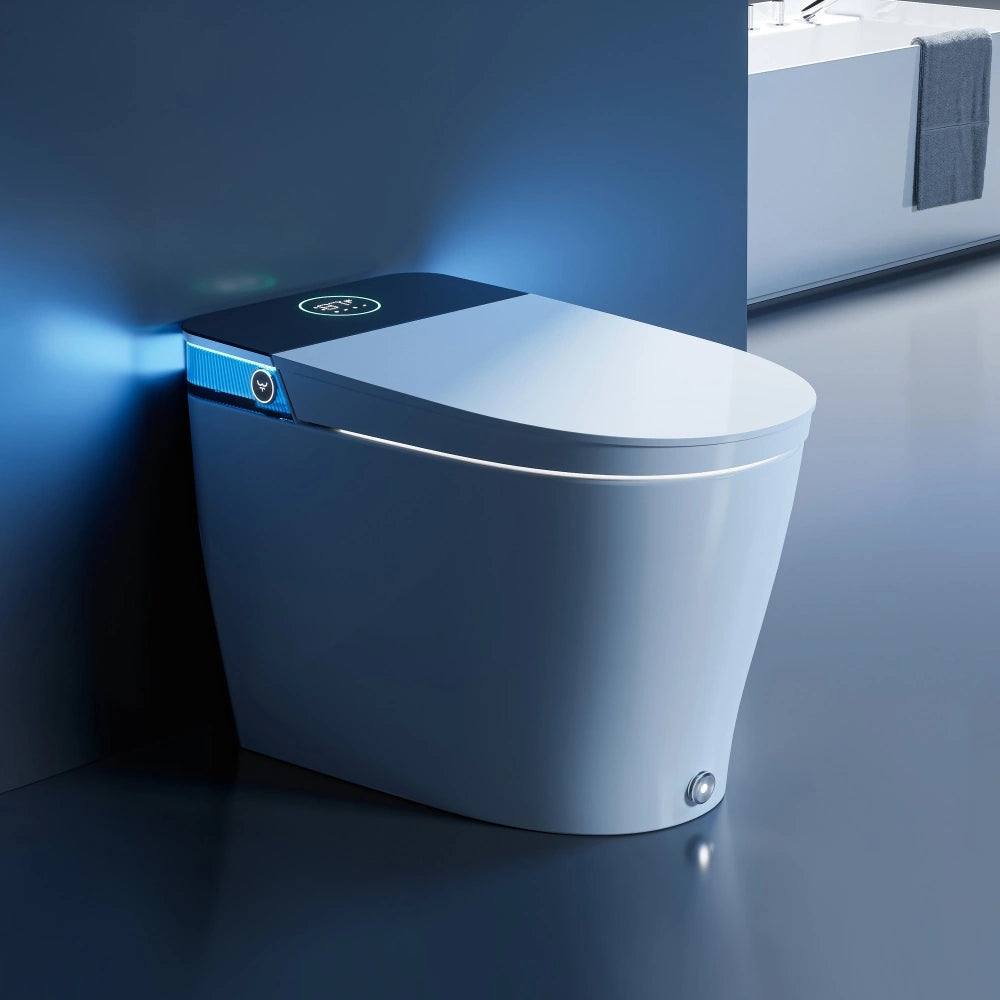
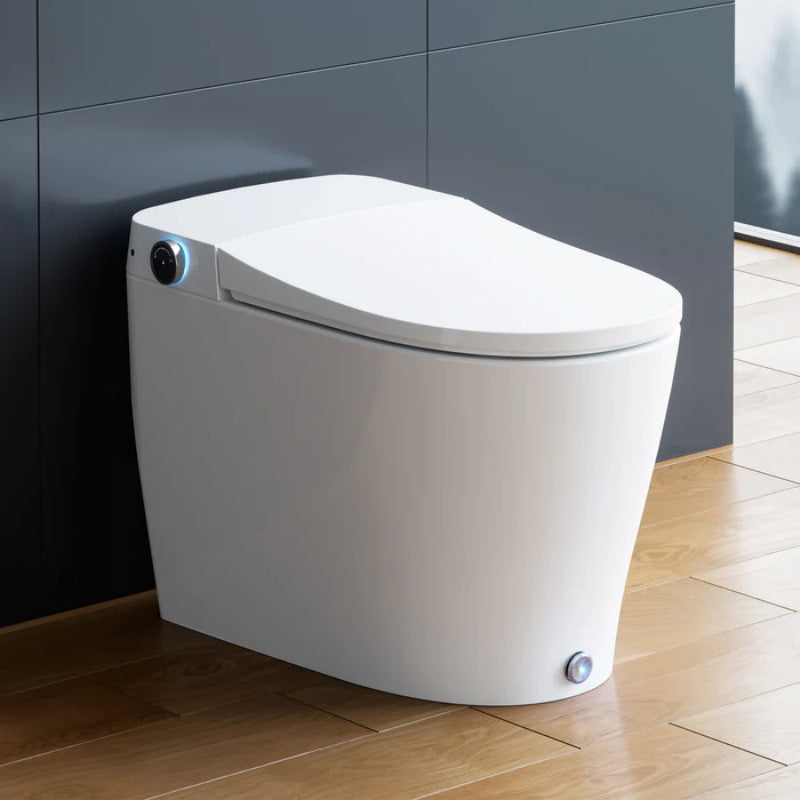
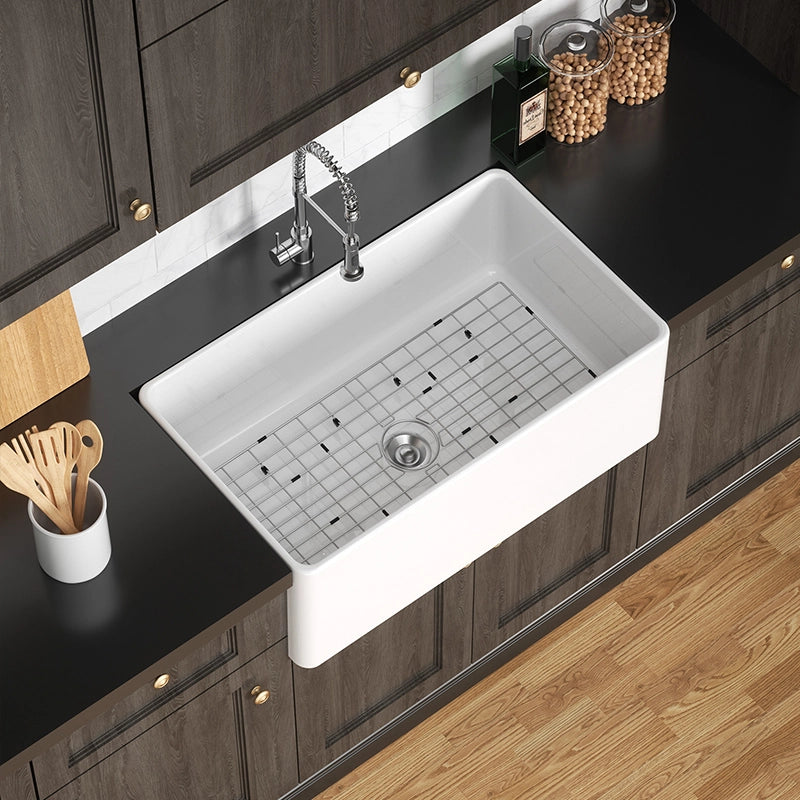
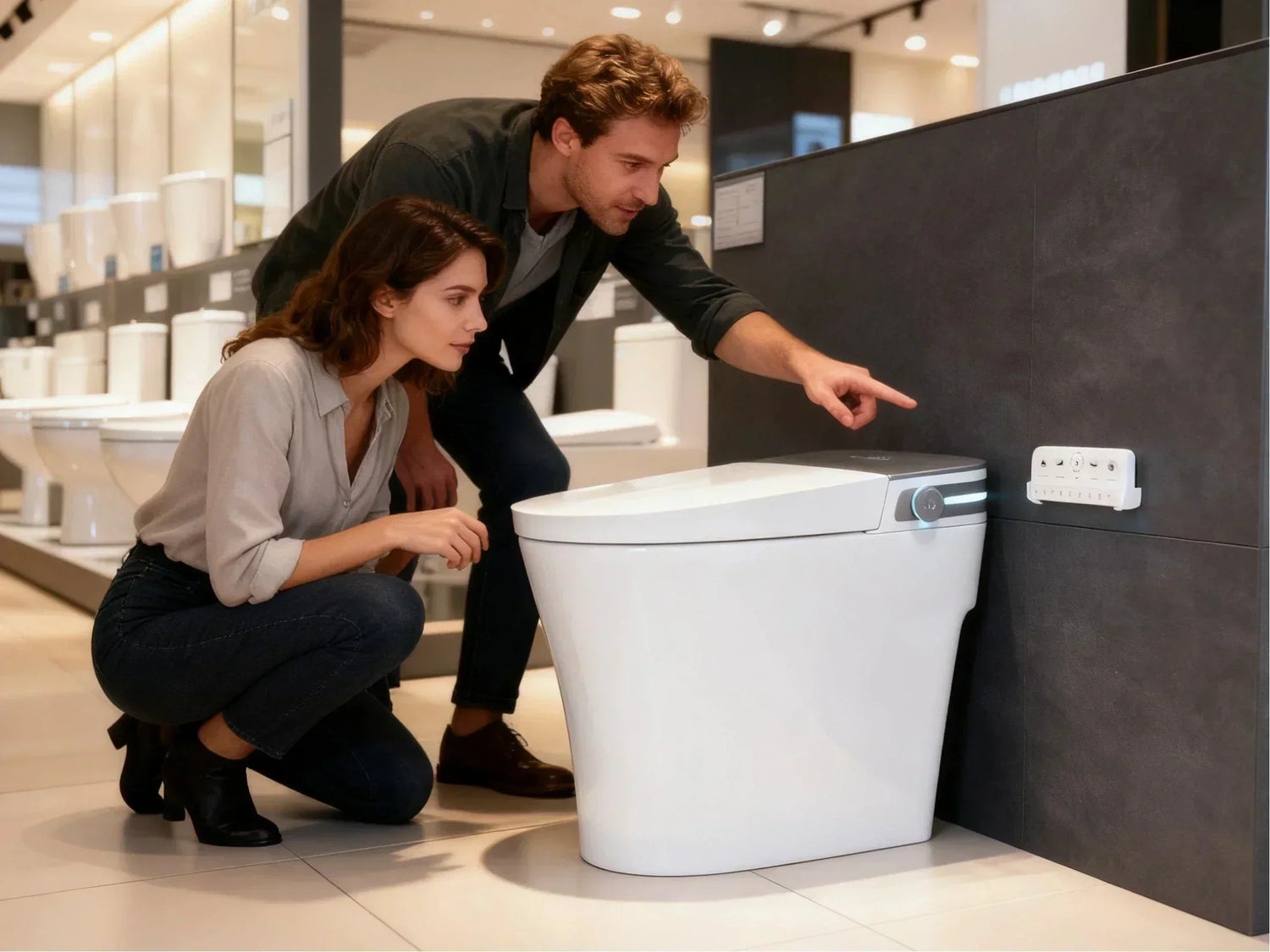
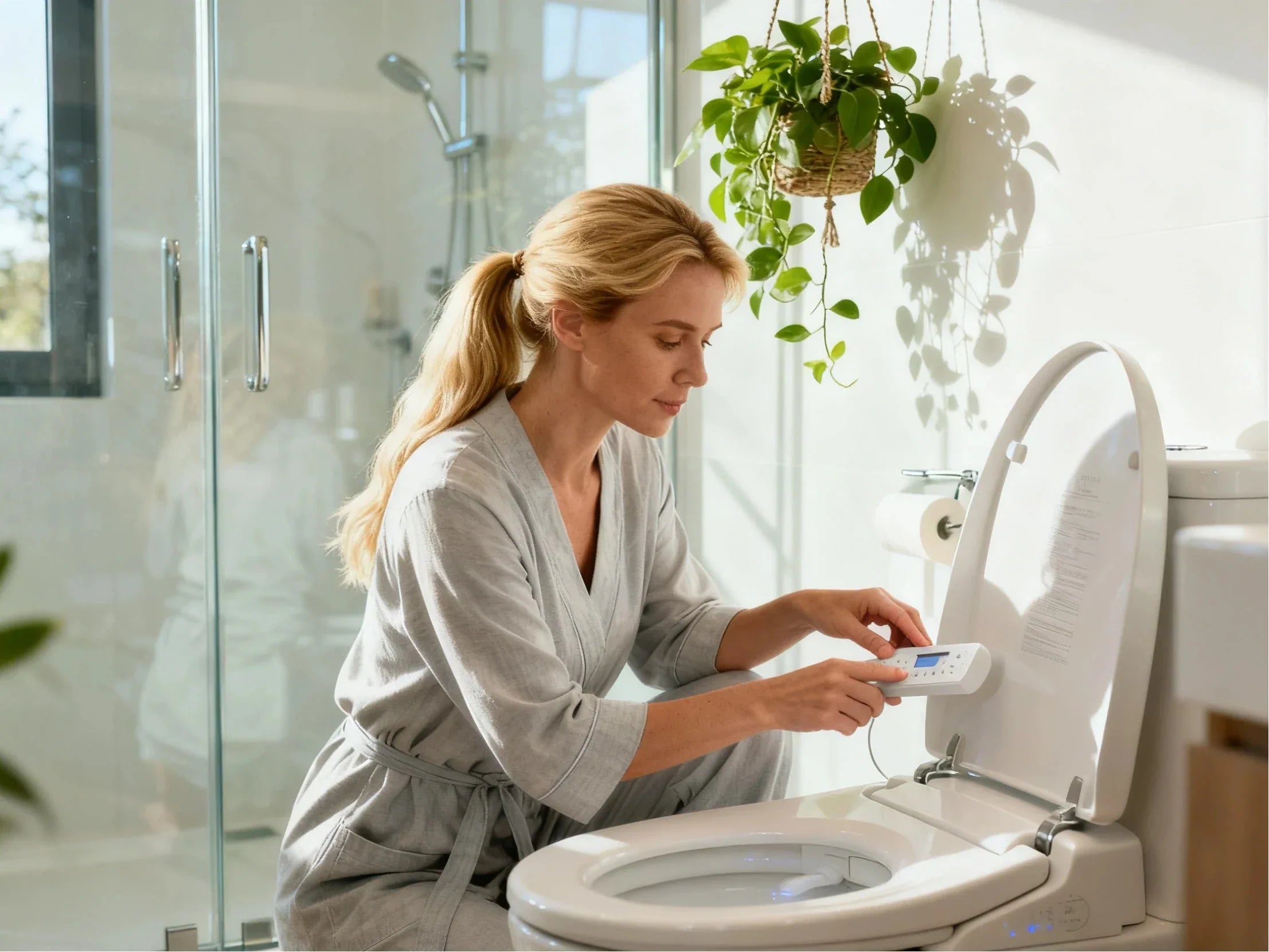
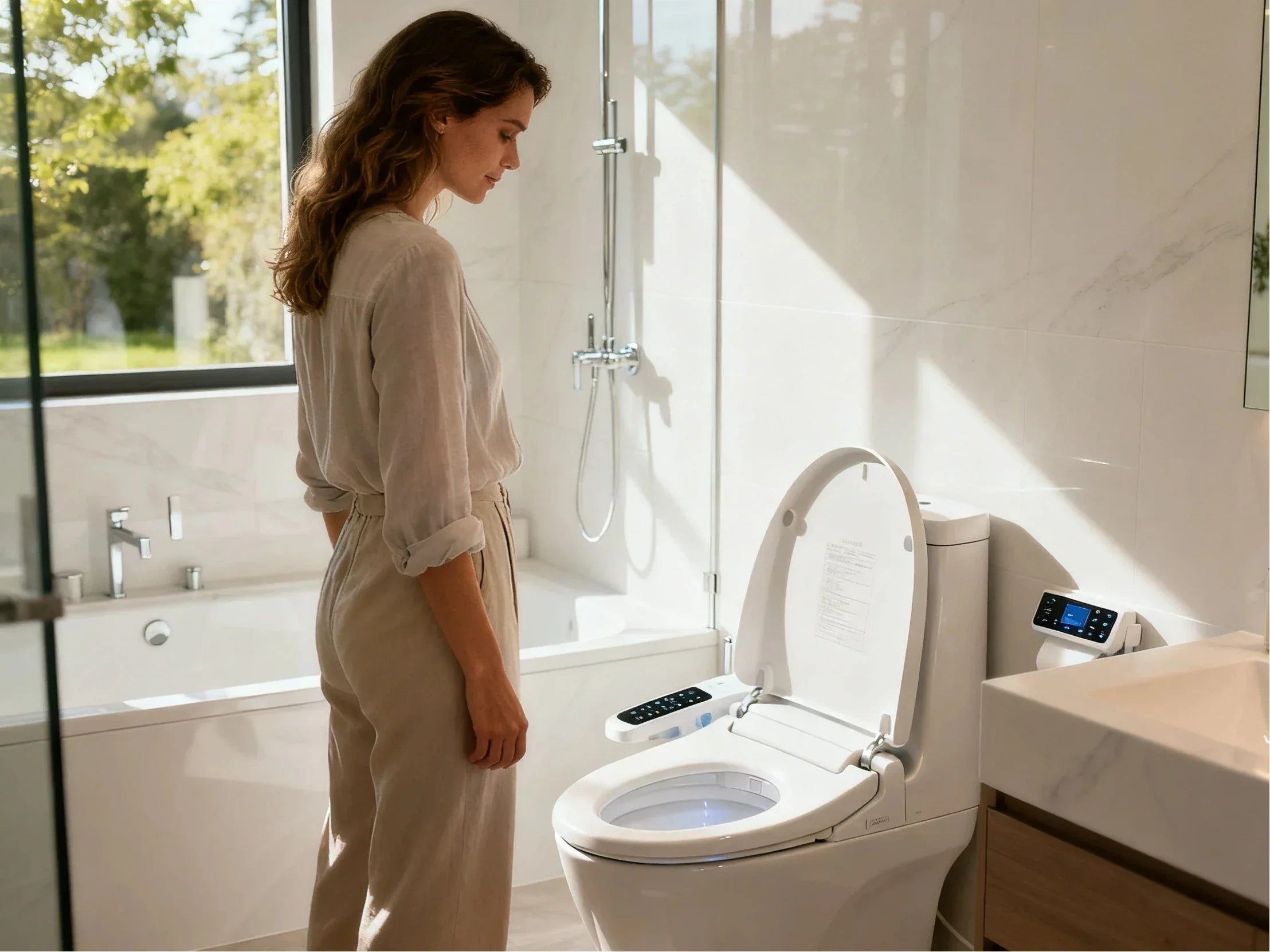

Leave a comment
This site is protected by hCaptcha and the hCaptcha Privacy Policy and Terms of Service apply.